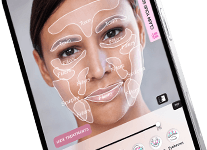Worried about freckles or brown spots on your skin? Want to get rid of them but unsure what you’re dealing with—and find yourself constantly searching online for “Age Spots vs. Sun Damage”? If yes, then your search ends here.
Now, to get rid of these blemishes, many people may try numerous brightening creams and home remedies, only to be disappointed. That’s because these skin issues need a more in-depth skin resolution than your usual topical treatments.
At Specialty Wellness, clients come to us feeling frustrated after trying every product on the shelf with little success. However, to mitigate this problem, it is essential to understand your skin and be aware of your specific skin concern, whether it is age spots or sun damage.
In this blog, we’ll explore the differences between age spots and sun damage, so you can confidently proceed with your skin treatment and achieve clear, healthy-looking skin.
Age Spots vs. Sun Damage: Knowing the Difference
Age spots, also known as liver spots or solar lentigines, are flat, tan to dark brown patches that typically appear in sun-exposed areas, such as the face, hands, shoulders, and arms. Despite their nickname, they have nothing to do with liver function—they’re a visible sign of accumulated UV exposure over time.
In the conversation of Age Spots vs. Sun Damage, it’s important to note that age spots are a result of sun damage, but sun damage encompasses a broader range of issues.
What Are the Signs of Age Spots?
- Flat, oval-shaped areas of increased pigmentation
- Most often tan, brown, or black
- Range in size from a freckle to half an inch
- Commonly found in adults over 50, but can appear earlier with high UV exposure
- Often cluster together, making them more prominent
When discussing age spots vs. sun damage, consider age spots as the skin’s way of protecting itself from further harm—essentially a biological sun shield.
What Does Sun Damage Look Like Beyond Age Spots?
Sun damage doesn’t stop at spots. Chronic exposure to UV rays can cause:
- Fine lines and wrinkles
- Rough or leathery skin texture
- Visible blood vessels
- Discoloration or blotchiness
- Precancerous lesions and skin cancers
This broader category is what truly defines sun damage in the age spots vs. sun damage conversation. It’s not just about appearance—it’s about the long-term health of your skin.

When in doubt in the age spots vs. sun damage debate, consult a dermatologist—especially if you notice an irregular spot, growing, or changing color.
Effective Treatments for Age Spots and Sun Damage at Specialty Wellness
At Specialty Wellness, we don’t believe in one-size-fits-all. Instead, we offer targeted, high-performance treatments designed to address both age spots and deeper sun damage with precision and care.
Here’s how we help you reclaim your healthiest, most radiant skin:
- Chemical Peels: Our chemical peel for pigmentation is formulated to exfoliate the outermost layer of sun-damaged skin, fading discoloration, and promoting cellular renewal. It’s ideal for treating age spots, melasma, and dull skin tone, leaving your complexion smoother and brighter.
- HydraFacial: This non-invasive facial deeply cleanses, exfoliates, and infuses the skin with targeted serums, such as Britenol, designed to reduce pigmentation and sun spots. It’s gentle yet effective, with no downtime—perfect for maintaining glow and clarity.
- LaseMD Ultra™: This advanced laser resurfacing treatment delivers energy below the skin’s surface to break up pigmented cells and stimulate collagen. It not only targets age spots but also improves texture, elasticity, and skin tone for a complete skin refresh.
- RF Microneedling: For more stubborn sun damage, RF microneedling combines micro-injury with radiofrequency energy to trigger deeper skin remodeling. It improves pigmentation, tightens skin, and reduces the appearance of sun-induced wrinkles and texture irregularities.
- CO2 Lasers: For clients with advanced sun damage and deeply set age spots, our CO2 Laser treatment offers dramatic skin renewal. It removes damaged layers of skin and regenerates healthier tissue from within, delivering transformative results.
Be cautious with over-the-counter skin lighteners—avoid ingredients like mercury. Your dermatologist can guide you to safe, effective options.
Prevention Tips: Stop Age Spots vs. Sun Damage Before It Starts
Prevention is the best strategy for managing both age spots and sun damage:
- Sunscreen every day (SPF 30+, broad-spectrum)
- Avoid peak sun hours: 10 AM – 2 PM
- Wear protective clothing: Hats, sunglasses, long sleeves
- Skip tanning beds: They dramatically increase UV exposure
By making sun protection a daily habit, you reduce the need to worry about age spots vs. sun damage later on. Your skin is telling you it’s had too much sun, and it’s time to start protecting and repairing. While age spots are usually harmless, unchecked sun damage can lead to serious health concerns.
Healthy, youthful skin starts with awareness. The more you understand the difference between age spots vs. sun damage, the better you can care for your skin today—and preserve its glow for years to come.















